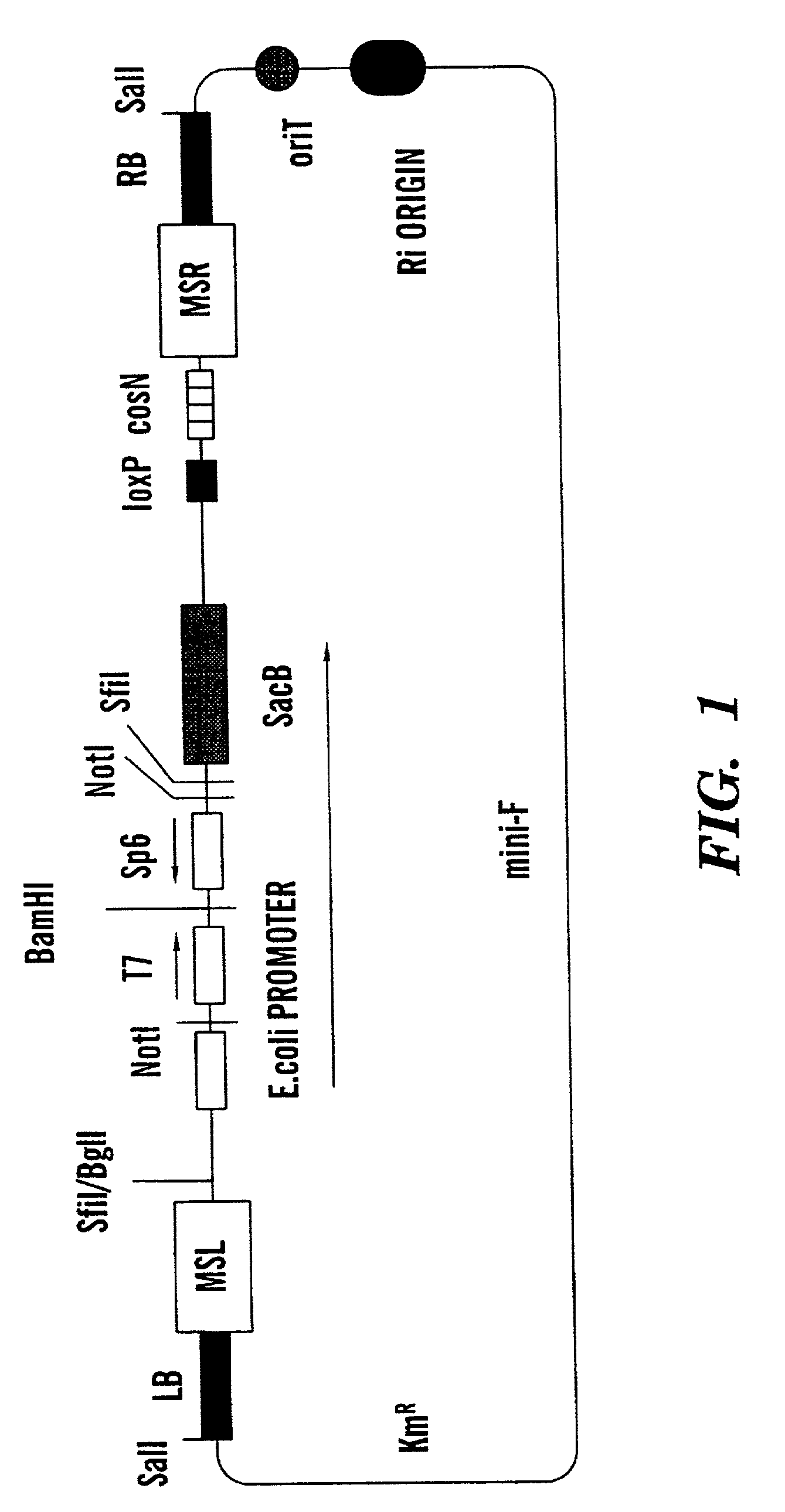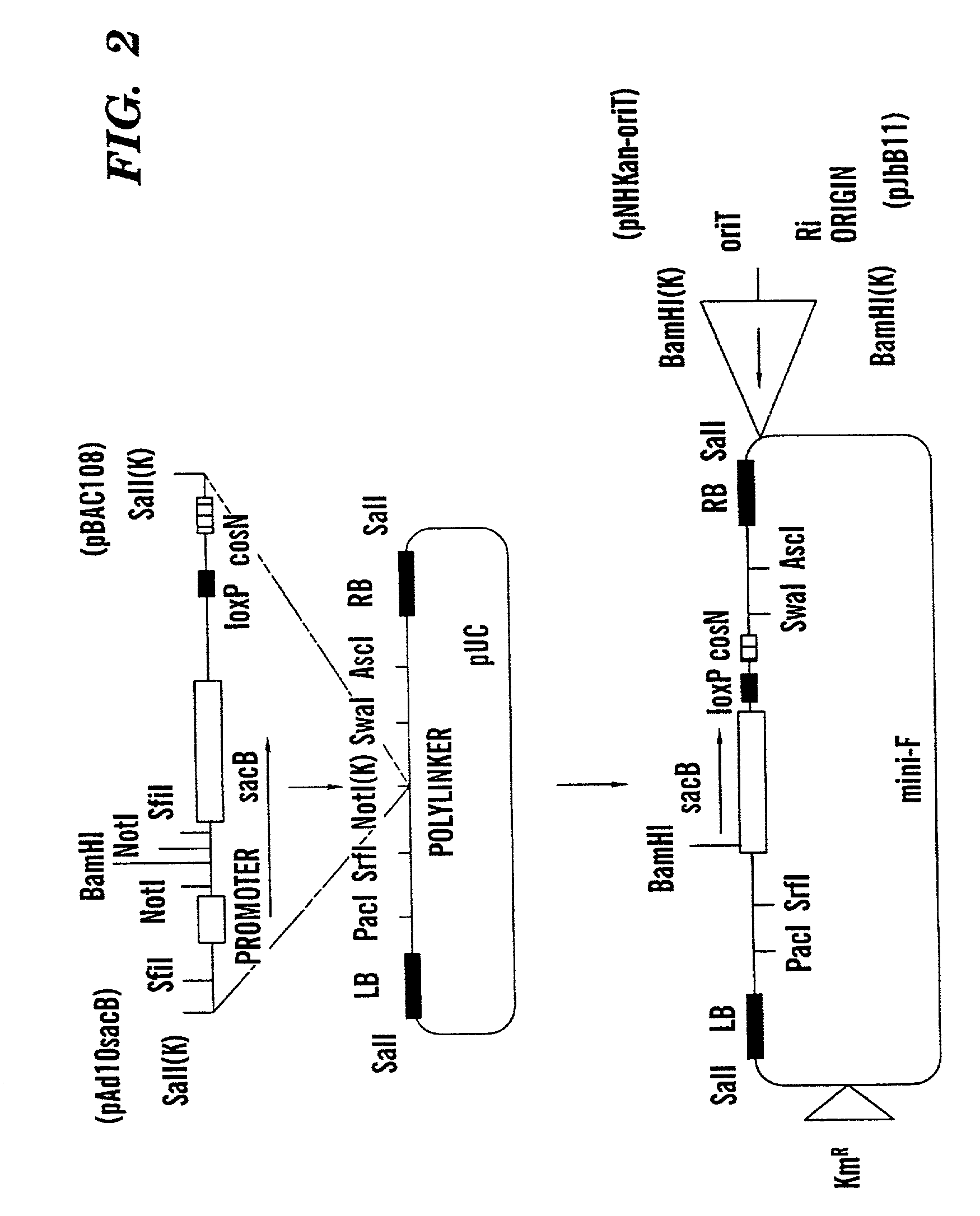Binary BAC vector and uses thereof
a bac vector and bac technology, applied in the field of transferring and expressing heterologous dna, can solve the problems of difficult or impossible collection of organisms from nature, limited quantity, and difficulty in identifying chemicals of interest synthesized by living organisms
- Summary
- Abstract
- Description
- Claims
- Application Information
AI Technical Summary
Benefits of technology
Problems solved by technology
Method used
Image
Examples
example 2
Testing of the BIBAC Vector
[0057] A physical map of BIBAC1 has been established, and the vector alone (without any DNA insert) functions as expected. It replicates in E. coli and A. tumefaciens. Tomato and yeast heterologous DNA have been inserted into the BamHI site of the BIBAC vector. Each resulting clone (which includes the vector and the heterologous DNA) was then introduced into Escherichia coli strain DH10B by electroporation. The E. coli strain DH10B has been widely used for construction of genomic libraries, and stability is not expected to be a problem for the majority of BIBAC clones. The DH10B strain contains recal which increases the stability of the inserts, as well as mcrA, mcrB, mcrC, and mrr, which in combination prevent the restriction of DNA which contains methylated cytosine and adenine residues. That is, it should not be a problem to clone even heavily methylated genomic DNA using this strain.
[0058] A triparental mating was then performed with the resulting Esch...
PUM
| Property | Measurement | Unit |
|---|---|---|
| Electrical resistance | aaaaa | aaaaa |
Abstract
Description
Claims
Application Information
 Login to View More
Login to View More - R&D
- Intellectual Property
- Life Sciences
- Materials
- Tech Scout
- Unparalleled Data Quality
- Higher Quality Content
- 60% Fewer Hallucinations
Browse by: Latest US Patents, China's latest patents, Technical Efficacy Thesaurus, Application Domain, Technology Topic, Popular Technical Reports.
© 2025 PatSnap. All rights reserved.Legal|Privacy policy|Modern Slavery Act Transparency Statement|Sitemap|About US| Contact US: help@patsnap.com


